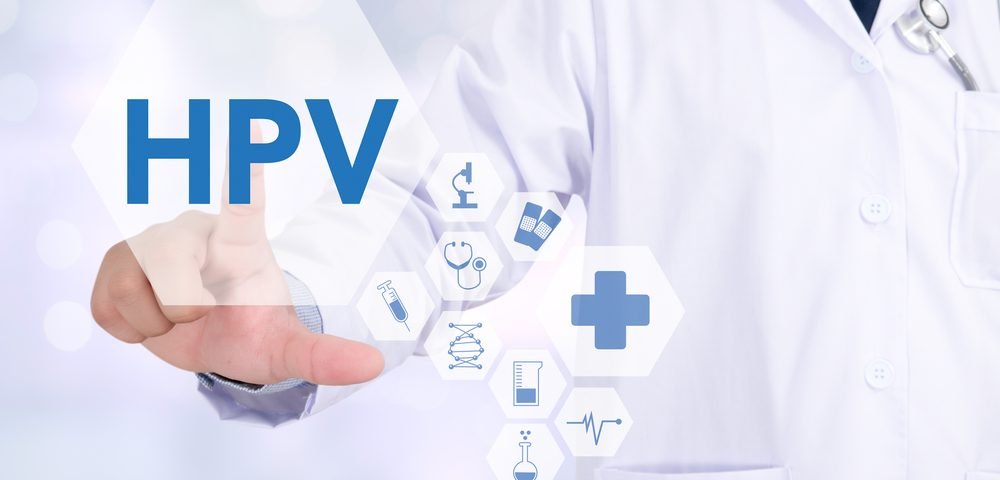Two doses of the human papillomavirus (HPV) vaccine are enough to protect children, younger than 15, from genital warts. The study — which looked at nearly 400,000 girls in the U.S. — provide the first real-world evidence that supports national and global recommendations that two doses of the vaccine are enough in this age group.
Last year, the Centers for Disease Control and Prevention (CDC) issued the two-dose recommendation for those younger than 15 after reviewing data from clinical trials. The data showed that the immune response was similar after two and three doses. The World Health Organization (WHO), likewise, recommended two doses, based on this information.
But up to now, no studies had shown that this really translated to a protection from virus infection.
The study, “Impact of Number of Human Papillomavirus Vaccine Doses on Genital Warts Diagnoses Among a National Cohort of U.S. Adolescents” — published in the journal Sexually Transmitted Diseases — did just that.
“The CDC and WHO based the new two-dose schedule primarily on immunogenicity results, but there was very little research on how effective that recommendation has been,” Rebecca Perkins, MD, an obstetrician at Boston University Medical Center and the study’s lead author, said in a press release.
“This study validates the new recommendations and allows us to confidently move forward with the 2 dose schedule for the prevention of genital warts,” she added.
Perkins and her research team compared rates of genital warts in girls who had received one, two, three, or no doses of the vaccine.
Those receiving either two or three doses had a similarly good protection from genital warts, compared to girls who received only one dose, or who were not vaccinated.
Statistics show that the introduction of the vaccine has been effective in preventing genital warts, but its aim is not merely to reduce these rates. Since the virus is the main driver of cervical cancer, it is crucial to study how the dosing regime impacts long-term outcomes of HPV infection, such as cervical dysplasia and cancer, researchers said.
“The data supporting a two-dose schedule is encouraging, but it only reports on genital warts, not cervical dysplasia or cancer outcomes. Collecting that long term data is paramount,” said Perkins, who is also an associate professor of obstetrics and gynecology at Boston University School of Medicine.
“This study will be a stepping stone for future research into the effectiveness of the two-dose schedule of the HPV vaccine for other symptoms of the disease.”


There is ZERO evidence that Cervarix and Gardasil will ever prevent a single case of cancer. The manufacturers, GSK and Merck, only ever state they are ‘intended to’ or ‘expected to’.
Cervarix is expected to prevent 2 strains of HPV, Gardasil 4 strains and Gardasil9 9 strains but there are over 170 strains of HPV with at least 40 involved in cancers but scientists expect other strains, potentially more lethal, to take the place of those which might be prevented by the vaccines. See Sonja Fischer peer-reviewed article ‘Shift in prevalence of HPV strains post vaccination’.
The World Health Organisation has a database of adverse drug reports at vigiaccess.org. There are over 167,900 adverse reactions in almost 73,000 reports of adverse events with this vaccine, including 280 deaths, WHO also acknowledges only 10% get reported.
What is worse there have been several reports of VACCINATED girls as young as 18 developing cervical cancer.
Dear Steve,
Numbers are best provided in context, I believe. As of 2014, 59 million women received at least one dose of the vaccine.
In addition, VigiAccess writes “Information on suspected ADR [adverse drug reactions] should not be interpreted as meaning that the medicinal product in question, or the active substance(s), generally causes the observed effect or is unsafe to use.
That said, it is true that there is currently a lack of evidence that the vaccine(s) prevent cancer. Large-scale vaccination programs have, however, only been available for a short time and mainly targets young women/girls. As cervical cancer has a median age of 49 at diagnosis, it may take more time before reliable studies of the efficacy of the vaccine in preventing cancer start appearing.
My daughter was severely disabled by this vaccine and I am now in touch with several hundred families who find themselves in a similar situation – 27% of them had side effects within 24 hours, many of them within minutes of the vaccine. Many went on to have further doses because they were told by health professionals it wasn’t a reaction to the vaccine. Of course the adverse reaction got worse with each dose.
With respect to evidence of cervical cancer reduction there is zero positive evidence BUT numerous cases of vaccinated young girls/women as young as 18 being diagnosed with cancer. Also in England and Scotland the government provide statistics on their ONS and ISD web sites by age group. They both had national campaigns starting in 2008 to vaccinate all 13 year old schoolgirls. They also had a 3 year catch-up programme for girls up to and including 18 year olds which was so successful it was completed in 2 years. They claim coverage of 90% so 20-24 years olds for the last few years should have approx. 90% coverage but the cervical cancer rate in this age group in England has increased and in Scotland it has increased almost 4 fold.